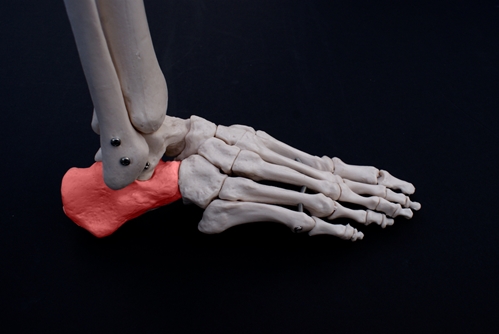
Heel bone spurs can become painful for some people.
Do you have pain in your heel? While there are a number of conditions and injuries that can cause this discomfort, one possible answer is bone spurs.
According to a 2014 trauma-clinic study published in the journal BMC Musculoskeletal Disorders, 38 percent of people have a heel bone spur in either the plantar or Achilles. About 11 percent have spurs at both places.
Though they do not typically require surgery or other invasive measures, bone spurs are nonetheless a frustrating condition with which those with heel pain should be familiar.
What are bone spurs?
According to Mayo Clinic, bone spurs – more formally known as osteophytes – are bony perturbances that grow along the edge of bones. While they can cause pain, most people tend to not even notice these bumps, as they rarely cause symptoms. In fact, the American Academy of Orthopaedic Surgeons reported that only 5 percent of those living with heel bone spurs experience foot pain.
Bone spurs, per Mayo Clinic, are caused by joint damage that is associated with osteoarthritis. As such, the heels are not the only location they can develop. Spurs can form anywhere that bone meets bone, such as the spine, knees, hips and fingers.
"Bone spurs are the projection of bone, like a needle that forms from the pulling of a tight plantar ligament," Dr. Lewis Maharam, FACSM, described in The New York Daily News. "This needle-like projection keeps irritating the soft tissues about the heal."
Though they tend to be asymptomatic, bone spurs can cause pain and loss of joint function in some cases.
While they are closely related to plantar fasciitis, it is possible to have bone spurs without the condition. Similarly, you can have spurs that do not cause pain while simultaneously experiencing discomfort from plantar fasciitis.

Living with bone spurs
Bone spurs can be diagnosed by X-ray or other imaging tests. Surgery or other extreme measures are rarely required for treatment. More commonly, doctors will prescribe over-the-counter pain medications, according to Mayo Clinic. However, in some cases the spurs may require surgical removal. This occurs if the growths are pressing on nerves or limiting your joint motion.
In addition to medication, Cedars-Sinai reported that in some cases bone spurs can be treated with steroid shots or physical therapy. Other times, you simply need to rest for a period to give your body time to recover. However, any treatment option should only be pursued at the recommendation of your physician.
If you are living bone spurs, consider using the Soft Stride® Bone Spur Pad, a simple insert designed to help manage any pain caused by this condition. The pad's inner circle provides padding for your heel, while the outer ring absorbs shock, reliving discomfort in your heels, as well as fatigue in your lower back. With the Bone Spur Pad, you can walk in comfort while your spurs heal.
